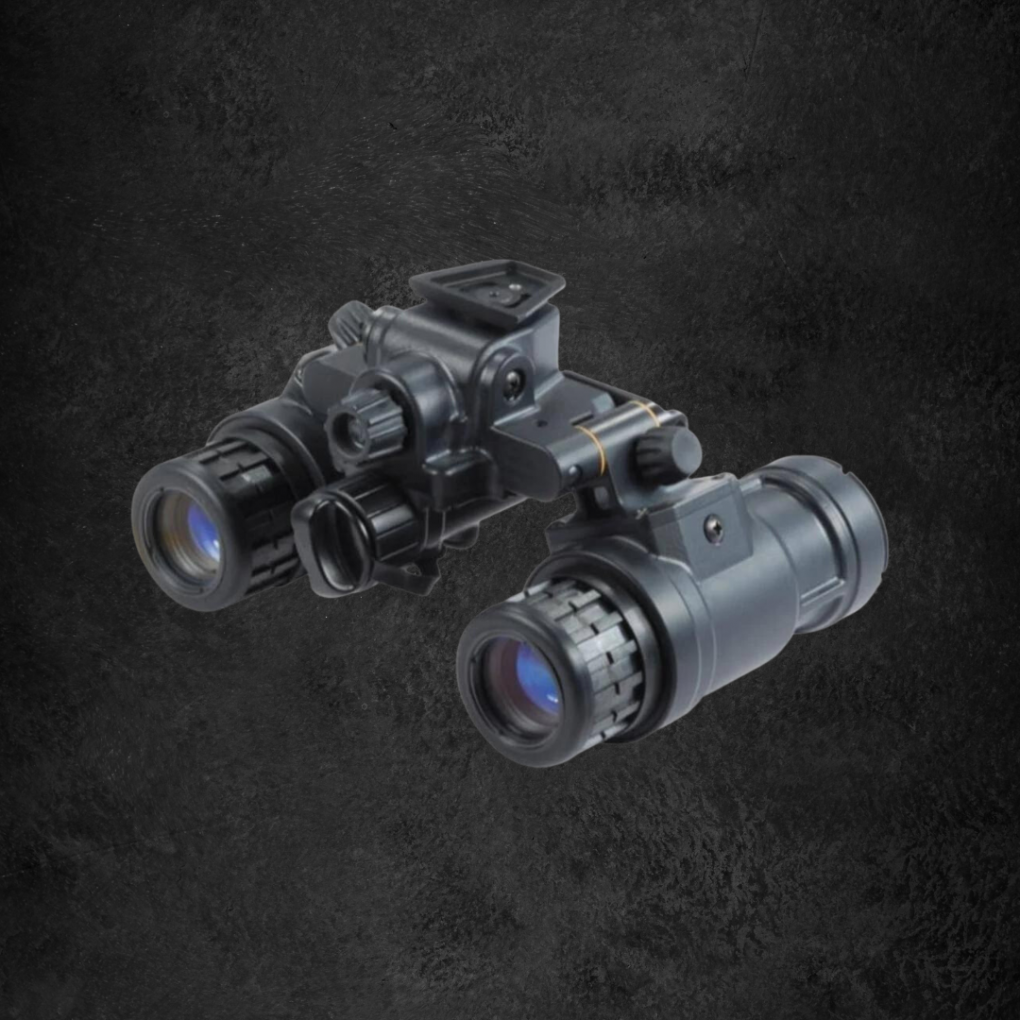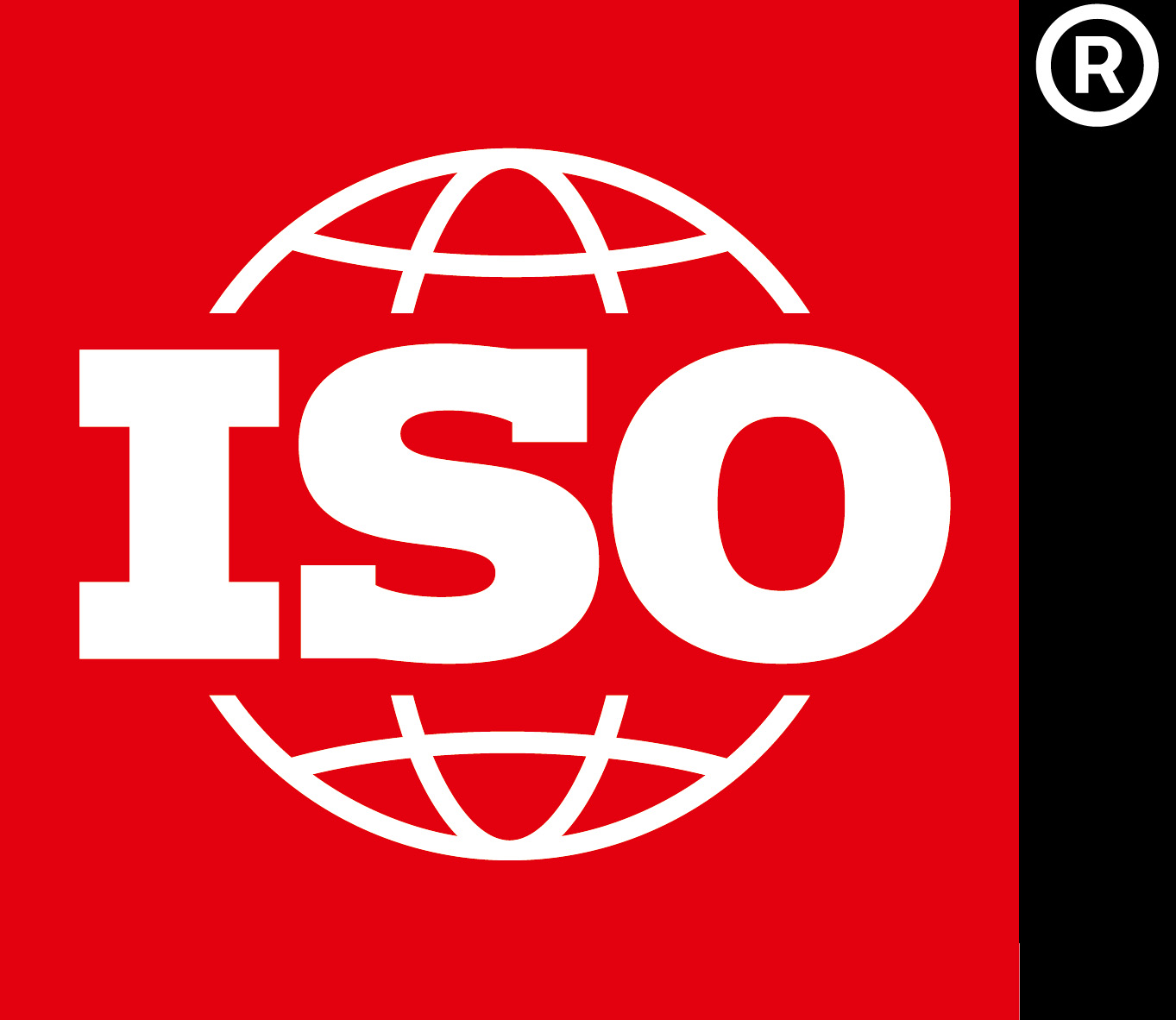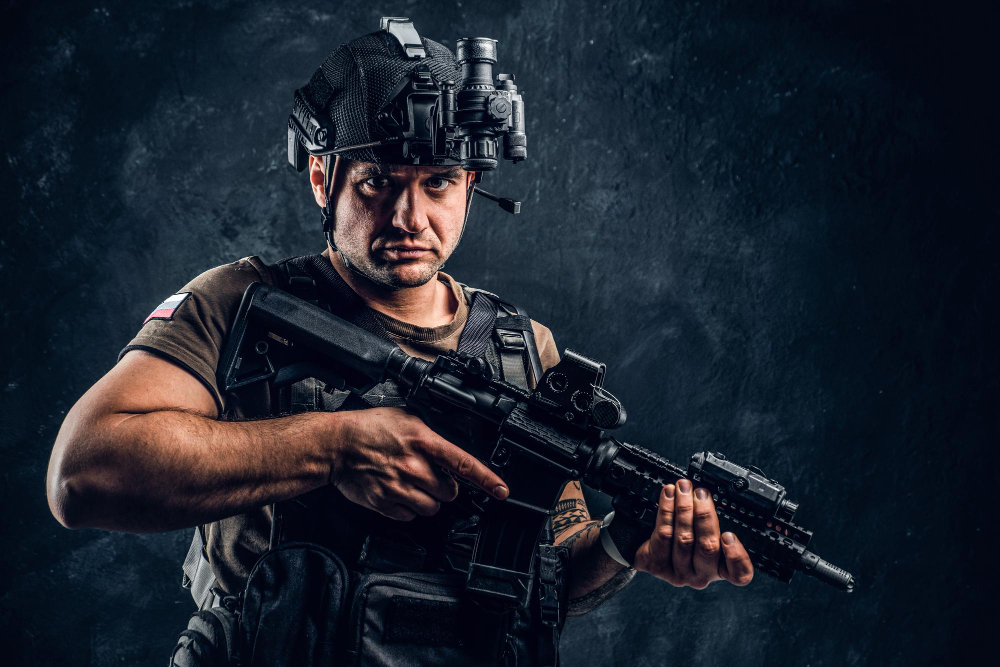Night vision technology has become increasingly popular in recent years, as it allows users to see in the dark with greater clarity and detail. Using thermal imaging and infrared illumination, night vision devices can detect the heat signatures of objects in the dark and amplify the available light, allowing users to observe the world around them in greater detail.
This article will discuss the benefits of night vision technology, how it enhances natural night vision, and what to consider when choosing a night vision device.
→ Take the time to read different articles by Steele Industries!
– NIGHT VISION TECH: UNDERSTANDING LIGHT WAVELENGTHS
– NIGHT VISION MYTHS VS. REALITY: DEMYSTIFYING THE HOLLYWOOD HOOPLA
– For more reading, visit our blog!
⇒ Contact us:
-Call us at (800) 674-7302
-E-mail: sales@steeleindinc.com
–Facebook/ steeleindustriesinc
–Instagram/steeleindustriesinc
Thermal Imaging and Infrared Illumination
Thermal imaging technology is a form of sensing that uses thermal radiation to detect heat sources and to generate a visual representation of the heat signatures.
Infrared illumination is a method of providing light for night vision devices by emitting a spectrum of light invisible to the human eye.
A comparison of thermal imaging and infrared illumination can be drawn in terms of their ability to detect heat sources and to provide illumination in low light settings, respectively.
Understanding Thermal Imaging Technology
Through the use of thermal imaging technology, one can experience improved vision during hours of darkness.
Thermal imaging technology is a form of technology that uses infrared radiation to detect the temperature differences in objects from a distance.
This technology uses a device to detect the differences in infrared radiation emitted from objects and then converts it into a visible image on a display. This image is then used to detect objects and people in the dark.
Thermal imaging technology is used in night vision devices to provide improved night vision capabilities, even in complete darkness.
The technology also has several benefits over traditional night vision devices.
Thermal imaging devices can detect objects and people in the dark, even through smoke and fog. They can also detect objects and individuals even when they are not illuminated by any light source.
This technology also has the unique ability to detect and display the temperature of objects, which can be used for various purposes, such as detecting a person’s body temperature.
Thermal imaging devices also typically have longer range capabilities than traditional night vision devices, allowing for improved visibility in the dark.
How Infrared Illumination Works
Infrared illumination is a form of technology which utilizes infrared radiation to detect different temperatures in objects from a distance and subsequently generates a visible image on a display. It is often used with night vision devices, which allow users to see in the dark by using infrared light to detect objects that emit heat.
Infrared illumination works by sending out a beam of infrared light, which is invisible to the human eye. This beam is picked up by a thermal imaging camera, which then processes the data and translates it into an image on a display.
The image produced by the camera is then interpreted by the user, who is able to discern objects in the environment based on their heat signature.
Since infrared light is invisible to the human eye, night vision devices are necessary to take advantage of this technology.
Such devices are typically equipped with either an infrared camera or an infrared illuminator, which allows the user to detect objects in the dark.
This technology can be used for a variety of applications, such as surveillance, navigation, and search and rescue operations.
Comparing Thermal Imaging and Infrared Illumination
By utilizing thermal imaging and infrared illumination, it is possible to detect objects in the dark, which can be used in a variety of applications.
Thermal imaging and infrared illumination have distinct differences that should be taken into consideration when comparing the two. These differences include:
- The type of camera used
- The type of light used to illuminate the object
- The type of data that is produced
Thermal imaging makes use of an infrared camera to detect objects in the dark, while infrared illumination utilizes a light source to illuminate the object.
Thermal imaging works by detecting infrared radiation that is emitted by objects, whereas infrared illumination works by illuminating the objects with an infrared light source. The data produced by thermal imaging is in the form of an image, while the data produced by infrared illumination is in the form of a spectrum.
This difference is important to consider when choosing between the two for a specific application. Thermal imaging is better suited for applications where the detection range needs to be long, while infrared illumination is better suited for applications where the detection range needs to be short.
For instance, thermal imaging can detect objects at a much greater distance than infrared illumination, making it better suited for applications such as security or surveillance. On the other hand, infrared illumination can detect objects at a much shorter distance than thermal imaging, making it better suited for applications such as night vision.
Enhancing Your Natural Night Vision
Darkness is an ever-present factor in the environment that can limit a person’s visibility and ability to navigate, making night vision an essential tool for some activities.
Human eyes have adapted to some degree of darkness, yet night vision devices and image intensification are still necessary for complete visibility in dark environments.
Night vision devices utilize a variety of technologies, including intensifying existing light, thermal imaging, and infrared light, to provide enhanced visibility in low-light situations.
The Human Eye’s Adaptation to Darkness
Through the careful process of adaptation, the human eye has developed an incredible capability to perceive its environment even in the most faint light.
In darkness, the pupil of the eye dilates to allow more light to enter the eye, while the cones and rods in the retina adjust their sensitivity to light. This adaptation allows the eye to see in low light conditions.
The human eye’s adaptation to darkness has three key components:
- The pupil of the eye dilates, allowing more light to enter the eye.
- The cones and rods in the retina adjust their sensitivity to light.
- The eye adjusts its focus, which allows it to see objects more clearly in low light conditions.
Through these adaptations, the human eye is able to see in darkness to a certain degree, though this natural night vision is limited. To further enhance one’s night vision, night vision devices can be used.
Night Vision Devices and Image Intensification
Image intensification technologies allow individuals to further extend their capabilities of perceiving their environment in low-light conditions. These devices use image intensification technology to collect and amplify available light, such as moonlight or starlight, and convert it into visible images.
This type of technology is most commonly used in night vision devices, such as night vision goggles, binoculars, and cameras. These devices amplify the light from outside sources, allowing individuals to see images in complete darkness.
Image intensification technology can also be used to create static images of a scene in low-light conditions. This can be done by using a long exposure mode on a camera, which allows the camera to collect more light and create a brighter image.
This type of technology is also used in security cameras, allowing them to capture images in dark or low-light environments. Night vision devices are a great tool for enhancing one’s natural night vision, allowing individuals to see things in the dark that would otherwise be impossible.
The Benefits of Night Vision Technology
Night vision technology offers a range of benefits for increased safety and security, expanded operational capabilities, and improved performance in low-light conditions.
This technology allows users to see objects in the dark they would otherwise be unable to detect.
By providing improved visibility, night vision technology can provide enhanced situational awareness and improved accuracy under low-light conditions, thus increasing safety and security, expanding operational capabilities, and improving performance.
Increased Safety and Security
Utilizing night vision devices can provide increased safety and security when operating in low light conditions. These devices allow for enhanced visibility, enhanced situational awareness, improved navigation, and improved response times.
Night vision devices create a greater level of visibility, allowing users to detect potential threats earlier and more accurately. This increased visibility also allows for enhanced situational awareness, enabling users to identify potential threats more quickly.
Additionally, navigation in low light conditions is improved with the use of night vision devices, as they allow users to navigate more quickly and efficiently.
Lastly, response times are improved with the use of night vision devices, as they allow users to respond to threats quickly and accurately.
Expanded Operational Capabilities
Through the utilization of night vision devices, operational capabilities can be significantly expanded in low light conditions. Night vision devices allow military personnel, law enforcement, and other personnel to extend their operational capabilities in low light conditions. This extends the hours of operations by allowing them to work during times of low or no light.
It also allows personnel to operate in an environment where they would not be able to do so without the device. Night vision devices also allow personnel to detect objects and people in low light conditions that would not be visible to the naked eye. The devices use infrared technology to detect objects and people that are not visible to the naked eye.
This allows personnel to detect objects and people that are trying to hide in low light conditions. This provides an additional level of safety and security to personnel operating in low light conditions.
Improved Performance in Low-Light Conditions
In low-light conditions, the use of night vision devices has proven to improve performance by allowing personnel to detect objects and people that are not visible to the naked eye. With this enhanced capability, personnel can:
- Operate more effectively:
- Identify potential threats more quickly
- Respond to emerging situations with greater agility
- Enhance their overall situational awareness
- Increase safety:
- Enhance their ability to detect obstacles and hazards
- Avoid potential collisions
- Reduce the risk of injury or death
- Enjoy more leisure activities:
- Participate in nighttime activities more confidently
- Enjoy the beauty of the night sky
- Expand their recreational options in the dark
How to Choose the Right Night Vision Device
Selecting the optimal night vision tool for a particular application requires a careful examination of factors such as size, weight, and functionality.
An individual will need to decide whether they need a device that is lightweight and portable or if they would prefer a more robust and powerful tool.
For those who need a lightweight device, there are night vision binoculars available that offer superior performance in low-light conditions. Those who need a more powerful tool can opt for high-resolution night vision goggles or scopes.
The weight of these devices can range from several ounces to several pounds, depending on the type of device.
In addition to size and weight, the user should also consider the range of the night vision device. Some devices are designed to work at greater distances than others.
Many night vision devices also include additional features such as infrared illumination for identifying targets in complete darkness. It is important to understand the type of environment the device will be used in so that the user can select the right device for their application.
Furthermore, it is important to understand the different types of night vision technologies, such as image intensification, thermal imaging, and digital night vision, to ensure that the user selects the most suitable device for their needs.
A Few Night Vision Devices Steele Industries Offers
PVS-31A L3 2376+ FOM WHITE PHOSPHOR

Description:
The AN/PVS-31A BNVD is a compact, lightweight, Gen III dual-tube goggle that features enhanced white phosphor tube technology for improved target detection and recognition. Low-light and nighttime operations appear more natural in black and white, providing the user with increased contrast and detail in shapes and shadows for better assessment and acquisition. White phosphor offers a range of intensity levels between black and white (compared to black and green), resulting in superior contrast and depth perception. This device has a sleek, ergonomic design and provides better situational awareness than single-tube goggles. Developed with feedback from SOF operators, the BNVD aims to enhance system resolution, significantly reduce head-borne weight, improve the center of gravity, offer increased operational utility, and promote overall situational awareness compared to traditional dual-tube goggles. The white phosphor BNVD is a successor to our proven AN/PVS-15 and AN/PVS-31 standard green phosphor night vision goggles.
DIMENSIONS: 4.2″ x 4.2″ x 3.4″
WEIGHT: 0.99 lbs (w/battery)
FINISH: Corrosion Resistant – Matte Black
POWER SOURCE: (1) AA Battery (On-Board) Or 4 AA Batteries (Remote)
BATTERY LIFE: >15 Hours (Single Battery) Or >50 Hours (4 Batteries)
WATERPROOF: 66′ For 2 Hours
SI/ PVS-14 L3 Unfilmed White Phosphor
Description:
The L3 selection presents an Unfilmed White Phosphor option. We’re delighted to make the L3 Unfilmed White Phosphor PVS-14 available to our clients!
*Tube images displayed on the Hoffman ANV-126A are for representation only and may not accurately capture all lighting conditions, speckling, or spots visible to the end users*
Please refer to the information below for specific tube specifications related to their serial number:
SELECTION:
PVS-14 170300214
LP – 72
SNR – 39.1
EBI – 1.5
HALO – 0.8
FOM – 2815
PVS-14 170288402
LP – 72
SNR – 35.3
EBI – 0.9
HALO – 0.8
FOM – 2542
PVS-14 170299376
LP – 72
SNR – 37.3
EBI – 1.3
HALO – 0.7
FOM – 2686
PVS-14 170299463
LP – 72
SNR – 37.2
EBI – 1.4
HALO – 0.8
FOM – 2678
PVS-14 170285173
LP – 64
SNR – 33.1
EBI – 1.1
HALO – 0.7
FOM – 2118
PVS-14 170299380
LP – 72
SNR – 34.6
EBI – 1.5
HALO – 0.7
FOM – 2491
PVS-14 170296459
LP – 72
SNR – 35.9
EBI – 0.9
HALO – 0.8
FOM – 2585
PVS-14 170296510
LP – 72
SNR – 36.4
EBI – 0.8
HALO – 0.8
FOM – 2621
PVS-14 170298325
LP – 72
SNR – 37.6
EBI – 1.1
HALO – 0.7
FOM – 2707
PVS-14 170302568
LP – 72
SNR – 40.3
EBI – 1.1
HALO – 0.7
FOM – 2902
PVS-14 170303033
LP – 72
SNR – 39.7
EBI – 0.5
HALO – 0.8
FOM – 2858
PVS-14 170302301
LP – 72
SNR – 35.9
EBI – 0.6
HALO – 0.8
FOM – 2585
PVS-14 170302398
LP – 72
SNR – 35.8
EBI – 0.6
HALO – 0.8
FOM – 2578
PVS-14 170302453
LP – 72
SNR – 35.6
EBI – 0.8
HALO – 0.7
FOM – 2563
PVS-14 170302459
LP – 72
SNR – 36.3
EBI – 0.5
HALO – 0.7
FOM – 2614
PVS-14 170302472
LP – 72
SNR – 35.8
EBI – 1.1
HALO – 0.8
FOM – 2578
PVS-14 170302796
LP – 72
SNR – 31.3
EBI – 0.3
HALO – 0.7
FOM – 2254
PVS-14 170302932
LP – 72
SNR – 35.5
EBI – 1.3
HALO – 0.8
FOM – 2556
PVS-14 170302968
LP – 72
SNR – 35.0
EBI – 0.8
HALO – 0.8
FOM – 2520
PVS-14 170302993
LP – 72
SNR – 35.7
EBI – 0.6
HALO – 0.7
FOM – 2570
PVS-14 170303035
LP – 72
SNR – 36.0
EBI – 0.5
HALO – 0.7
FOM – 2592
PVS-14 170303036
LP – 72
SNR – 33.4
EBI – 0.4
HALO – 0.7
FOM – 2405
PVS-14 170303141
LP – 72
SNR – 36.3
EBI – 0.9
HALO – 0.7
FOM – 2614
PVS-14 170303248
LP – 72
SNR – 36.3
EBI – 0.4
HALO – 0.8
FOM – 2614
PVS-14 170303263
LP – 72
SNR – 36.3
EBI – 0.5
HALO – 0.7
FOM – 2614
PVS-14 170303269
LP – 72
SNR – 33.6
EBI – 0.8
HALO – 0.8
FOM – 2419
PVS-14 170303383
LP – 72
SNR – 35.6
EBI – 0.6
HALO – 0.8
FOM – 2563
PVS-14 170303408
LP – 72
SNR – 34.6
EBI – 0.3
HALO – 0.7
FOM – 2491
PVS-14 170303432
LP – 72
SNR – 38.9
EBI – 1.0
HALO – 0.7
FOM – 2801
PVS-14 170303435
LP – 72
SNR – 37.7
EBI – 0.5
HALO – 0.8
FOM – 2714
PVS-14 170303513
LP – 72
SNR – 35.0
EBI – 0.7
HALO – 0.7
FOM – 2520
Conclusion
The advancement of night vision technology has made it possible to see in the dark in ways that were previously unimaginable. Thermal imaging and infrared illumination have enabled individuals to observe their environment even when visibility is limited.
Furthermore, the use of night vision devices has provided a variety of benefits, including increased safety, improved tactical advantage, and enhanced surveillance capabilities.
By understanding the advantages of night vision devices, individuals can make an informed decision as to which device best fits their needs.
Ultimately, the use of night vision devices can provide individuals with the ability to observe their environment in the dark, and ultimately enhance their natural night vision.


